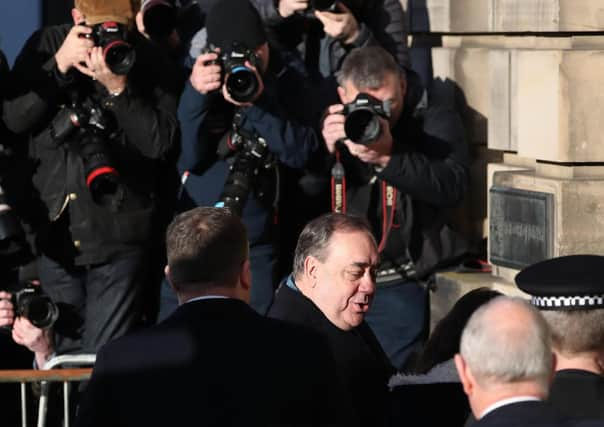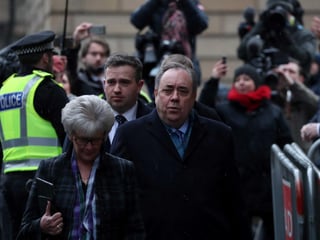Dani Garavelli: The strange scenes outside Alex Salmond trial


Hume himself, of course, did not believe in luck. And the building he presides over is dedicated to the rigorous pursuit of truth and justice.
Today, though, the attention of the tourists has been diverted elsewhere: to the banks of photographers who have gathered around the front entrance awaiting Alex Salmond. Police officers stand in clusters; the photographers jostle for the best spot. The tourists aren’t sure what is going on, but they snap away anyway. One more for the holiday file alongside pictures of the castle and Holyrood Palace.
Advertisement
Hide AdAdvertisement
Hide AdThey have indeed captured a historic moment: the former First Minister of Scotland about to go on trial on 14 charges, including sexual assault and attempted rape.
He doesn’t keep them waiting long, arriving with his sister Gail, former constituency office worker Isobel Zambonini, and his legal team. When he reaches the court door, he ushers the women in before him.
Inside, some nervous-looking potential jurors take their citation notices to the front desk. Dozens of journalists are milling around.
There is a peculiar dynamic to the press pack during court cases – a sort of combination of braggadocio and insecurity. Everyone wants to appear as if they are well-briefed, while relying on others to keep them right. This is especially true for this particular trial where the stakes and the risks of breaching reporting restrictions are so high and the space limited. Everyone is jittery.
Soon the journalists are asked to form a queue. One by one they are called into a small court, which has been converted into a media room with a video link for the duration of the trial. This is because, during sex offence cases, the court is always cleared while the complainers give evidence. There are ten complainers in this case, so much of the reporting will be done from here.
In the end around 40 journalists gain access. It is full to capacity. The lucky ones have seats and a table to lean on. The rest perch on tables or pitch camp on the floor. For a long time nothing happens, so they swap news and theories as to how the trial will unfold.
Sitting behind him, in the court itself or the media room, the view is of the slight bald patch on the back of his head.
The balloting of the jury is straight forward and undramatic. Fifteen names are picked out of a bowl and one by one they take their seats.
Advertisement
Hide AdAdvertisement
Hide AdNine women and six men. The case is being heard by Lady Dorrian, Scotland’s second most senior judge, whose strong voice commands instant respect. She is currently chairing the Improving the Management of Sexual Offence Cases review, which is looking at how court process and the experience of complainers can be improved without compromising the rights of the accused.
Lady Dorrian tells the jurors they are “judges not detectives”. Their verdict should be decided only on evidence they hear in court; so they shouldn’t look up the case in the newspapers or on the internet. She says Salmond is a well-known public figure, and tells them if they have any animosity or strong feelings about him or any of the complainers they should step down. No-one does. Most of them swear the oath, but at least one affirms.
As the court prepares to hear from the first witness - Woman H, a Scottish government official – the screen used to shield complainers is moved towards the centre of the court and Salmond is asked to shift slightly to the right, so there is no chance of him seeing her. He is accused of sexually assaulting and attempting to rape her.
This is the first chance to see prosecuting advocate Alex Prentice in action. The experienced lawyer has previously won high profile cases including that of Nat Fraser who was convicted of killing his wife Arlene. He has an understated, but forensic style.
Woman H answers his questions. When Prentice finishes, the court rises for the day. The jury file out, and the journalists grab their belongings and run off to find a quiet place to file.
